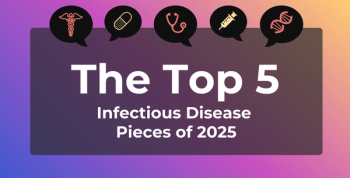
More Research Needed on Possible Link Between Hot Flashes, CVD in Women With HIV
Previous studies have investigated the association between hot flashes and immune system activation among women with HIV, but this is the first study to investigate an additional link to adverse subclinical cardiac pathology.
Women living with
Previous studies have investigated the association between hot flashes and immune system activation among women with HIV, but this is the first study to investigate an additional link to adverse subclinical cardiac pathology. The findings from this observational base-control study were recently published in
“Hot flash burden relates not only to quality-of-life measures but also to levels of systemic inflammation and surrogate markers of CVD risk,” the authors stated. “Specifically, women with hot flashes (vs women without hot flashes) have greater systemic levels of inflammatory markers and lower flow-mediated dilation a predictor of CVD events.”
The 42 women in the study (23 living with HIV and on antiretroviral therapy [ART], 19 without HIV) were all from the Boston area, and they completed 3 health assessments at baseline: reproductive, immune, and cardiovascular phenotyping. For the study, menopause was defined as, “no menses in the past year absent an alternative explanation (traditional definition of menopause).”
Most of the women were White (52.4%) or Black (33.3%), their mean (SD) BMI was 32 (7) mg/m2, close to half (47.6%) were current smokers, and their median (interquartile range [IQR]) 10-year atherosclerotic CVD score was 2.5% (95% CI, 1.3%-4.5%). For the women with HIV, it had been a mean 19.2 (7.7) years since their diagnosis, 18 had been on ART for a median 16.7 (IQR, 8.9-21.4) years, and the median HIV viral load was 19 (IQR, 19-19) copies/mL for those with the measure available (n = 20).
Overall, the women living with HIV vs those without HIV had significantly higher levels of 4 inflammatory markers at baseline:
- Soluble CD14 (sCD14): 1925.1 (488.6) vs 1513.9 (256.7) ng/mL (P = .003)
- Soluble CD163: 1260.3 (293.1) vs 937.5 (308.4) ng/mL (P = .005)
- c-c motif ligand 2: 210.4 (42.8) vs 167.4 (44.8) ng/mL (P = .009)
- c-x-c motif chemokine ligand 10: 152.0 (IQR, 100.2-206.5) vs 106.7 (IQR, 97.4-134.5; P = .10)
These women also had more days per week with hot flashes compared with the women who did not have HIV: median 7.0 (IQR, 1.3-7.0) days compared with 0.8 (IQR, 0.0-2.1; P = .01) days.
“After controlling for race, HIV status remained an independent predictor of days per week with hot flashes,” the authors noted. Sensitivity analyses revealed similar findings, in that the women with HIV who had either menses in the previous year or detectable levels of anti-Müllerian hormone (AMH), a biomarker of ovarian reserve, had greater median frequency of hot flashes:
- Menses: 7.0 (IQR, 6.3-7.0) vs 0.4 (IQR, 0.0-2.3; P = .007)
- AMH level: 7.0 (IQR, 2.4-7.0) vs 0.8 (IQR, 0.0-2.1; P = .01)
Analyses also revealed these findings:
- Higher sCD14 levels in the women (with and without HIV) with more than 1 hot flash per day (P = .004) vs a maximum of 1 hot flash per day (P = .02)
- A direct correlation between years since onset of hot flashes and increased intramyocardial triglyceride content among the women with HIV(ρ = 0.80; P = .02)
- An inverse correlation between years since onset of hot flashes and left atrial passive ejection fraction among the women with HIV (ρ = –0.70; P = .03)
Despite their findings showing a greater frequency of hot flashes among women living with HIV, an exact mechanism of action for just why those hot flashes are more frequent and severe remain, unknown, as does their relationship with CVD risk factors.
Two probable causes are that do the women with previous-year hot flashes were on ART for a significantly greater length of time and had greater vasomotor instability, indicating a link between the two, and monocyte activation and hot flash burden among women with HIV may be related due to higher systemic levels of sCD14 in those who had more than 1 hot flash per day.
Further studies are needed, the authors note, “given that women living with HIV have increased CVD risk as well as evidence of advanced reproductive aging. Addressing hot flash burden clinically among WWH has important implications for control of HIV viremia and attendant inflammation in this at-risk population.”
Reference
Toribio M, Fulda ES, Chu SM, et al. Hot flashes and cardiovascular disease risk indices among women with HIV. Open Forum Infect Dis. Published online January 12, 2021. doi:10.1093/ofid/ofab011
Newsletter
Stay ahead of policy, cost, and value—subscribe to AJMC for expert insights at the intersection of clinical care and health economics.








































